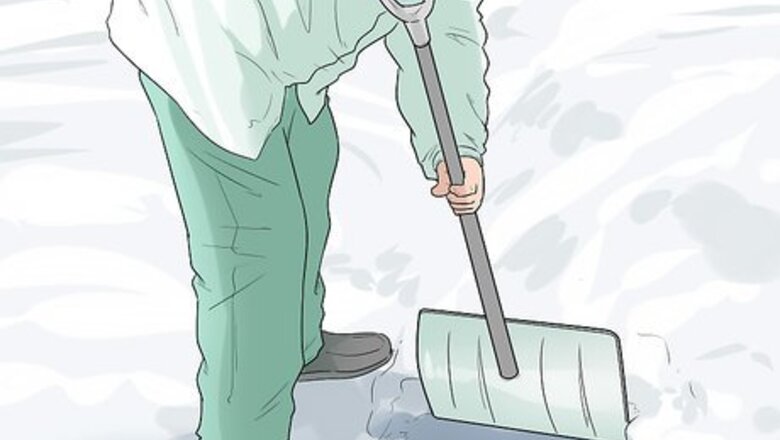
views
Finding Clear Paths for Walking
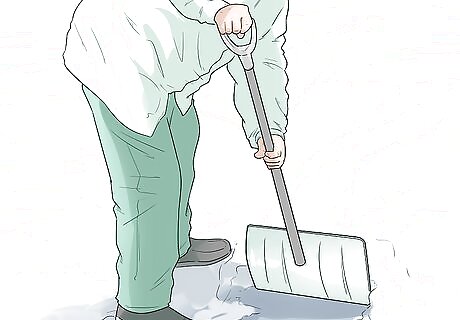
Make paths for your dog to move in. If your dog typically goes out in your yard for exercise and to relieve itself, this is a great place to start. Shovel or use a snow blower to clear paths through the snow for your pup to walk through. Take care to avoid creating piles of snow high enough that your pup is in danger, if the snow collapses onto the path.
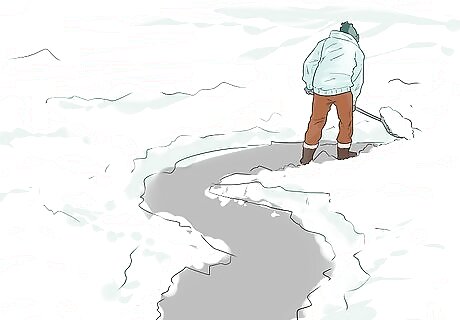
Shovel snow often. You can make little paths that lead to your dog's favorite spot in the yard or at least from your door to a cleared area. This will make it easier and safer for you and your dog to walk in the snow. If you keep the areas around your doors, driveway, and sidewalk clear by shoveling after each new snowfall, walking your dog will be much easier.
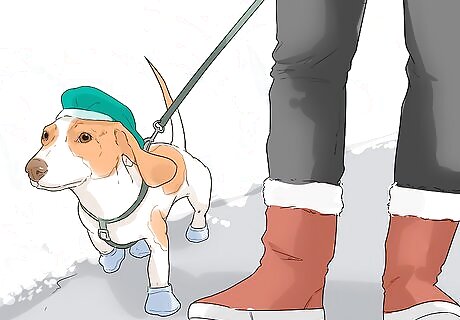
Drive your dog to clearer areas. If your neighborhood, street, or yard are too snowy for your pup to walk safely, look for less snowy walk locations. Typically, parks and schools are cleared by the city, so you’ll be able to walk further with less obstruction for your pup. If you are able to drive your pet, take a train, or bus to an area with less snow, this could be your best option for a comfortable walk.
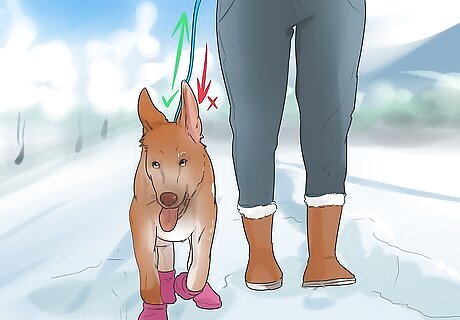
Prevent your dog from pulling on the lead. Dogs should always be trained against this behavior, but it can be especially precarious in the snow. If your pup starts pulling on the lead, stop immediately, and try to establish both solid footing and control of the dog. Stay in one place until your pup stops pulling, and continue to stop each time it starts pulling.
Keeping Your Dog Warm

Dress your dog for the weather. Depending on the depth of the snow and the temperature, you should make sure your dog is wearing a sweater or water wicking coat to keep them warm. Some pet clothing made specifically with weather protection in mind will include information about the lowest recommended temperatures for wear. As always, ask your veterinarian for suggestions, if you’re worried your pup isn’t warm enough on their walk. Pay attention to breed specific or dog specific needs. If your pup is panting or looks overheated when wearing a sweater or coat, you may want to leave the coat off for your next outing.
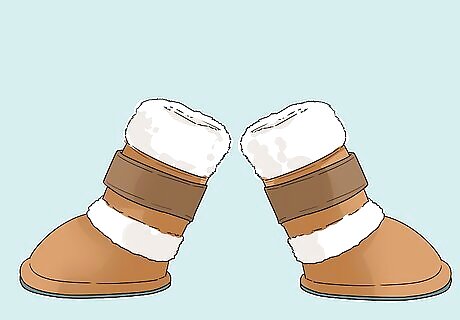
Use dog shoes. Like humans, dogs loose most of their warmth through their extremities, so keeping dog feet and legs warm is essential to equalize their body temperature during walks in the snow. Dog shoes are the easiest way to keep your pup's paws warm. Most dog shoes made for cold weather are also waterproof and add traction to keep your dog safer. With your dog standing, lift one foot and place it in a shoe. To ensure your pup puts its full weight into the shoe, lift the opposite leg once the shoed foot is in place. Then, adjust any straps or closures as necessary. You can find shoes for dogs at most pet stores and online. If you don't see any in your local pet store, ask an employee whether or not they stock this item.

Dry your dog after the walk. Have towels by the door and dry off your pup as soon as you get home. Water will trap moisture onto your pet's coat and will keep its body temperature too low. Take a few moments to towel or blow dry your dog when you return home from your walk. Don't forget to wipe off your dog's paws too in case there's sidewalk salt on them.
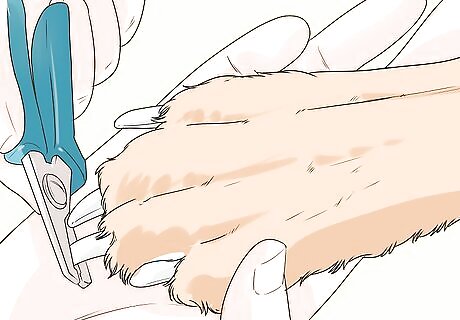
Trim your dog’s nails. This improves traction, as your dog’s foot is able to flatten out completely on the ground. By staying up right, your pup will remain drier and warmer. Trim nails using children’s nail clippers or those specifically crafted for pets, but take care as a large vein runs through dog nails. Known as the quick, this vein can cause serious bleeding when damaged. Trim your dog's nails as often as necessary to prevent them from reaching the ground or otherwise impeding your dog's movement. If your dog has lightly colored nails, you’ll be able to see the quick. It’s the darker pink colored part of the nail. If your dog has darkly colored nails, you’ll need to look for the quick as you clip. Remove a small amount of nail. Then, look at the newly exposed end. If you see a gray area in the nail, this is the quick, and you should stop clipping.
Getting the Most Out of Short Winter Walks
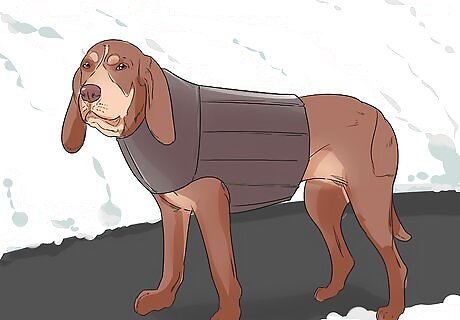
Add a weighted backpack. The additional weight will require your pup to expend more effort to walk a shorter distance, so they’ll be burning off more energy while walking closer to home. That way, you won’t need to venture too far in the cold, and your pup will still burn off all that pent up energy.
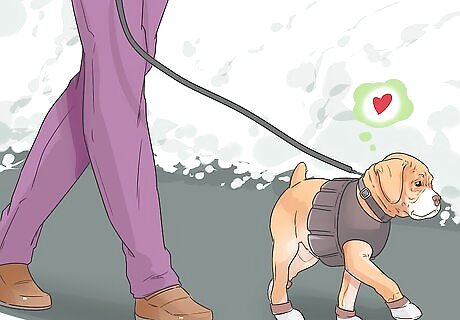
Walk only as long as your dog seems interested. If your dog has access to an area for waste relief, they don’t need to go for lengthy walks, so don’t push them to keep walking in the snow if they seem uninterested. Instead, take them outside to relieve themselves and for short walks, if they seem to have excess energy.
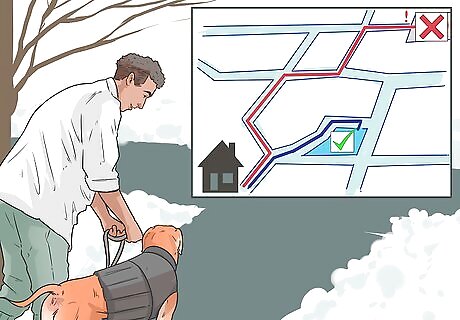
Avoid walking too far from home. Know your limits. You don't want to find yourself exhausted and stranded blocks from home and still have to trudge through the snow on the way back. Instead, do laps around your block or even your house. It will get your pup plenty of exercises, and ensure you're close to home if you need to warm up.
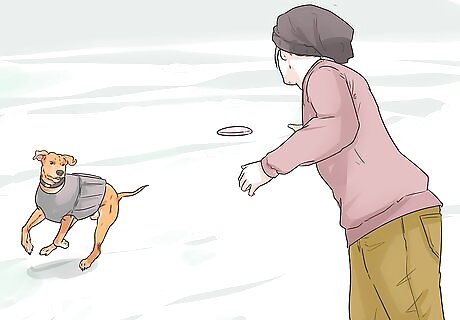
Burn your pup's energy in other ways. Walking is a great way to relax and tire a pup, especially if your dog has a lot of extra energy, but if there’s snow on the ground, try some different energy burning games. For instance, have a friend play keep away with you and your pup. Stand on two sides of your pup and toss a Frisbee, ball, or another toy back and forth, letting your pup try to snatch the object from you. If you don't have a friend handy, you can play tug of war with your dog, or give it a puzzle toy to play with.



















Comments
0 comment